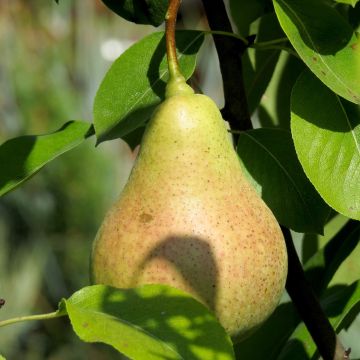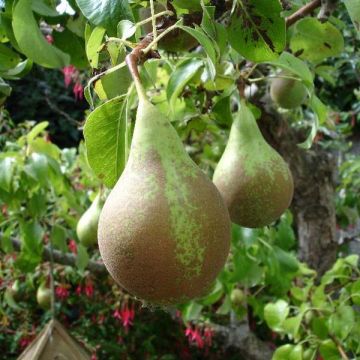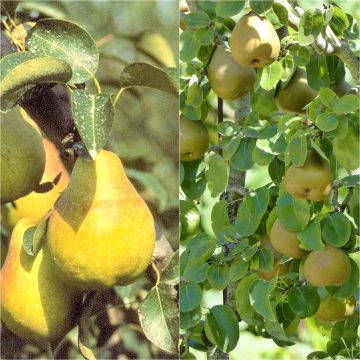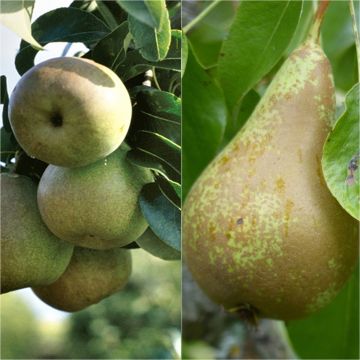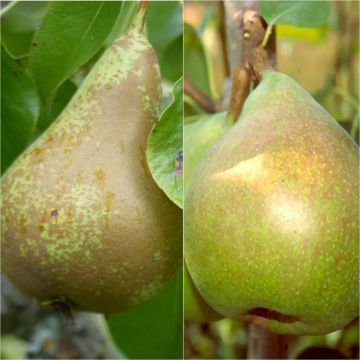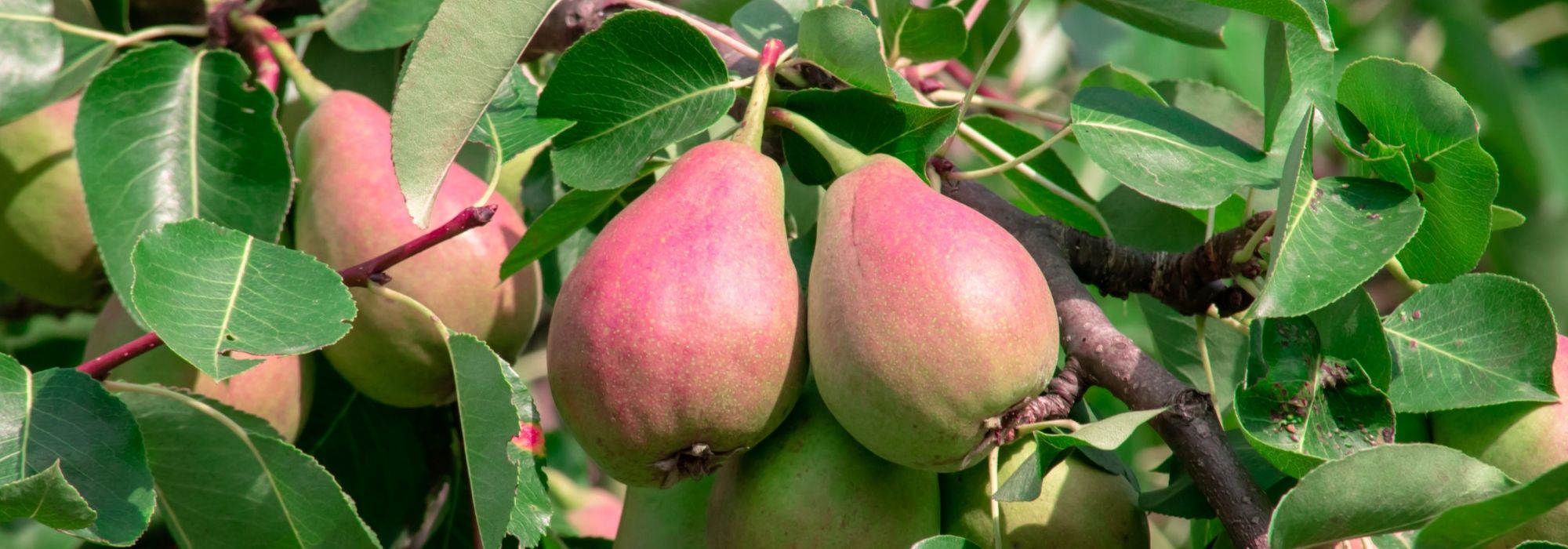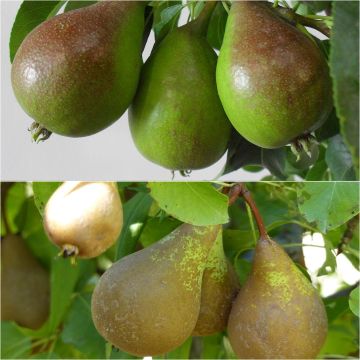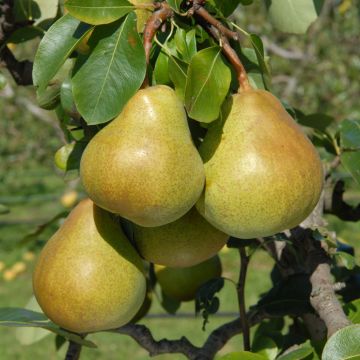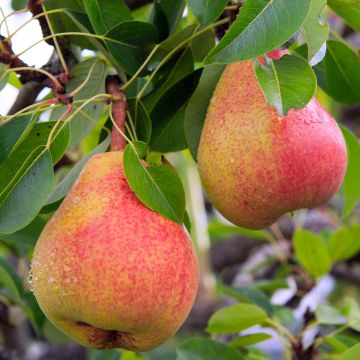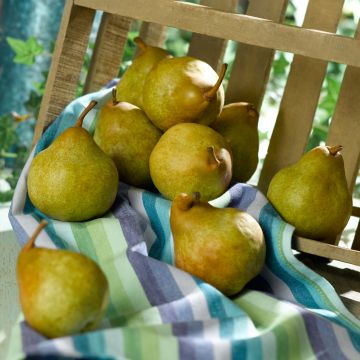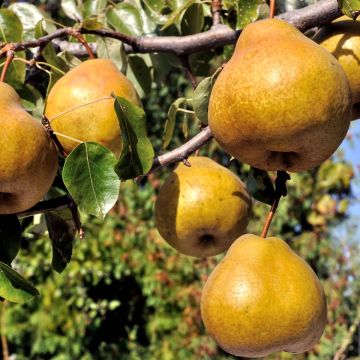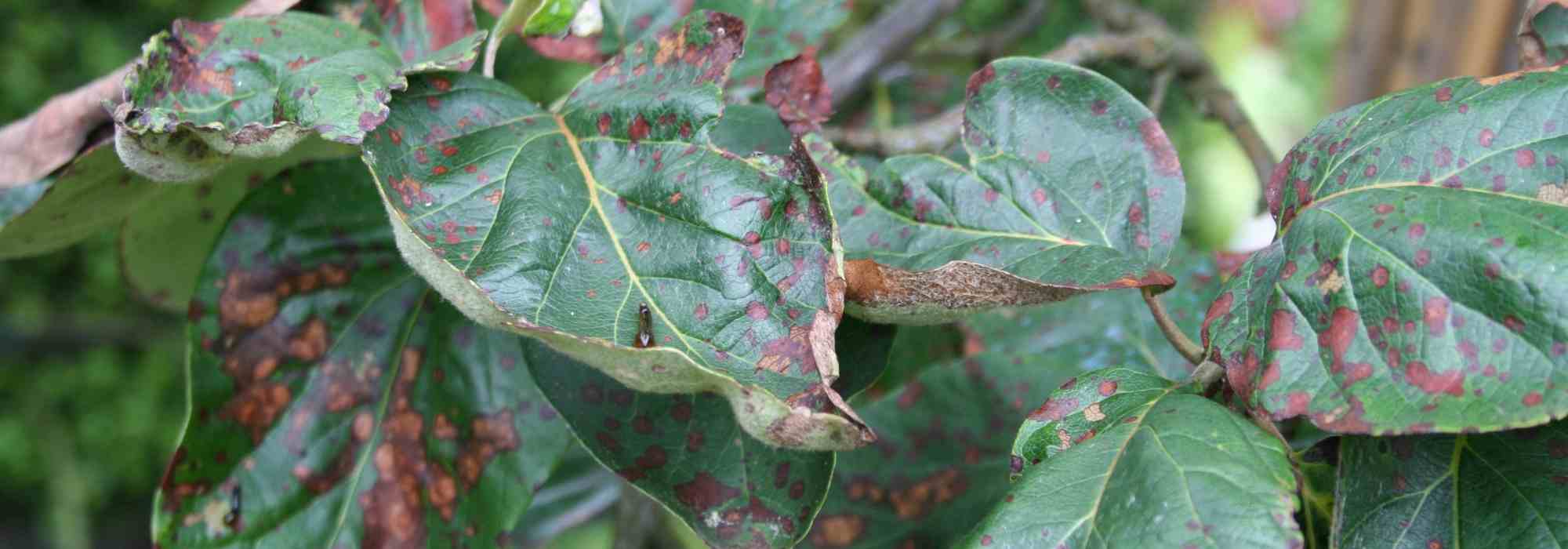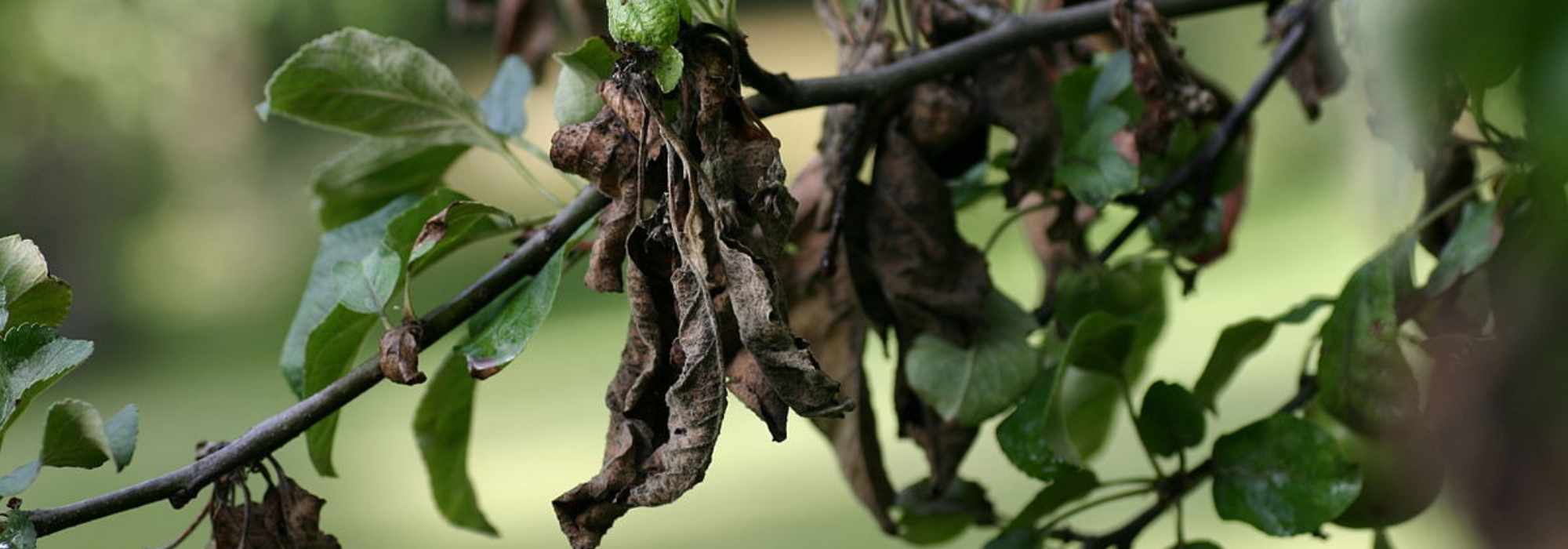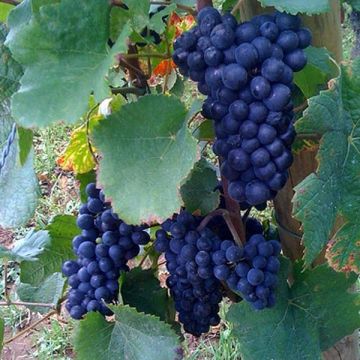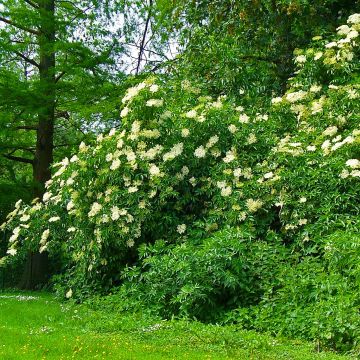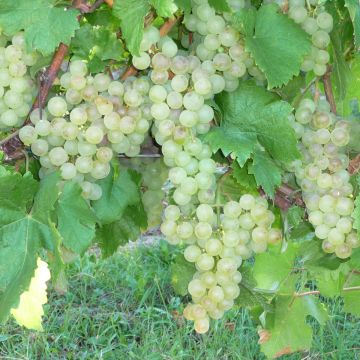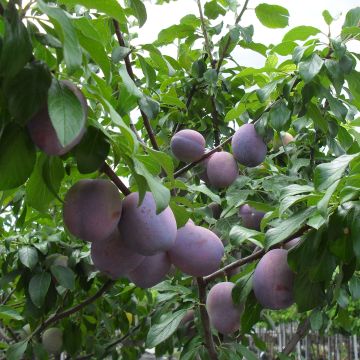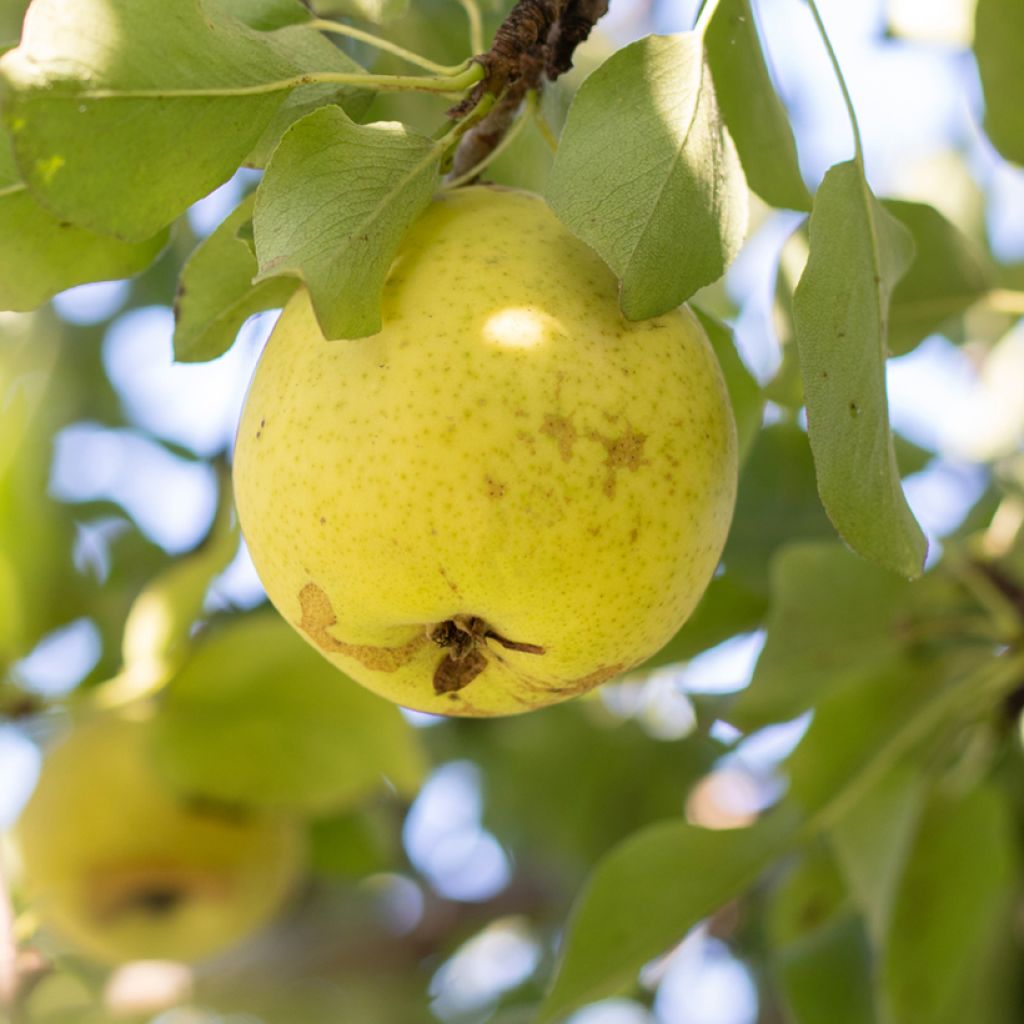

Poirier à poiré Plant de Blanc
Pyrus communis Plant de Blanc - Pear Tree
Pyrus communis Plant de Blanc
Common pear, European pear
Special offer!
Receive a €20 voucher for any order over €90 (excluding delivery costs, credit notes, and plastic-free options)!
1- Add your favorite plants to your cart.
2- Once you have reached €90, confirm your order (you can even choose the delivery date!).
3- As soon as your order is shipped, you will receive an email containing your voucher code, valid for 3 months (90 days).
Your voucher is unique and can only be used once, for any order with a minimum value of €20, excluding delivery costs.
Can be combined with other current offers, non-divisible and non-refundable.
Why not try an alternative variety in stock?
View all →This plant carries a 6 months recovery warranty
More information
We guarantee the quality of our plants for a full growing cycle, and will replace at our expense any plant that fails to recover under normal climatic and planting conditions.

Description
The 'Blanc' Pear Tree is a variety that produces small to medium-sized fruit, globular in shape, resembling an apple. The smooth skin is light green, turning yellowish-green when ripe, dotted with brownish-red spots and covered in cork at both ends. Its white flesh is firm, very juicy, sweet, and tart. The fruits are grouped in clusters on the branches. Harvesting takes place all at once around mid-October. When pressed, it yields a high-quality, sweet juice. This juice is used to make pear juice, which, after distillation, becomes pear brandy. The fermentation process takes place when the pears are ripe, around late October, early November. Plant de Blanc is the main variety used in France for making pear brandy. It is a partially self-fertile variety that requires the presence of other pear varieties nearby to improve pollination and increase fruit production.
Pyrus communis (Common Pear) is a fruit tree belonging to the Rosaceae family. It has been present in Europe since ancient times and is native to forests in Western Asia. In France, pear trees appeared in the 16th century, when several species were cultivated in the gardens of the king during the reign of Louis XIV. Over the centuries, a large number of cultivars have emerged. Its cultivation is widespread in Europe. In 1607, the Thresor de Santé wrote that in "Normandie la basse," cider and pear wine were made, which were warming and intoxicating. Julien Le Paulmier (1520-1588), a French physician from Saint-Lô, dedicated an entire chapter to pears in his "Treatise on Wine and Cider." In the 16th and 17th centuries, while apple cider was gradually spreading to all parts of Normandy, pear cider remained limited to certain areas in the south and east of the region, notably in the Domfront region (Domfront en Poiraie, a new commune in the south of Orne, in the Normandy region).
The 'Blanc' variety has its origins in Normandy, where it has been cultivated since at least 1857. It is undoubtedly the most commonly used variety for making pear brandy. This pear tree forms an upright pyramid-shaped tree, reaching approximately 6 metres (20 feet) in height and 5 metres (16 feet) in width at maturity. It produces numerous diverging and trailing branches. Pear trees can be grown as standard or dwarf trees. The deciduous foliage consists of large, alternate, ovate, shiny green leaves that turn yellow-orange in autumn. The flowering occurs in the second half of April, which usually protects it from frost. The white flowers, single and 2 to 3cm (1in) in diameter, are grouped in umbels and are rich in nectar. They can be destroyed by frost at temperatures below -2 to -3°C (28.4 to 26.6°F). It is a hardy tree that can withstand temperatures around -25°C (-13°F) and is suitable for cultivation in all regions of France, including high altitudes. This Pear Tree is self-sterile or self-incompatible, meaning the flowers cannot fertilize themselves. That's why the presence of other pear varieties nearby, flowering at the same time, is necessary. For example, the 'Beurré Hardy', 'Conference', 'Doyenné du Comice', 'Fausset', 'Jules Guyot', 'William's Bon Chrétien', and 'William's Rouge' varieties are suitable for cross-pollination, increasing the number of fruits. In a pear orchard, cross-pollination occurs based on the number of trees.
This Pear Tree is a very productive variety, with quick fruiting and abundant, irregular, good fruit production every two years. Harvesting begins around mid-October, and the fruits can be consumed as they ripen. Towards the end of October, the pears are pressed to obtain a fermented sparkling juice, which is used to make a clear, pale yellow to golden yellow drink called "poiré." It is characterized by fine bubbles that are not aggressive and aromas dominated by fruity (citrus, peaches, etc.) and floral notes, with hints of exotic fruits. The flavors are balanced between acidity, slight bitterness, and the sweetness provided by unfermented sugars. Brut perry (between 3.5° (38.3°F) and 5.5° (41.9°F) alcohol) or sweet perry (approximately 3° (37.4°F) alcohol) should be consumed chilled, between 10 and 12°C (50 and 53.6°F). Brut perry pairs well with all kinds of dishes, especially those made with veal, poultry, or fish. Sweet perry is wonderful to accompany desserts, cheeses, fruit salads, crepes, or to be used in cocktails. From perry, after distillation, pear brandy is made. Using pear must and pear brandy, the famous Mistelle is produced, a drink with an alcohol content ranging from 16 to 22° (60.8 to 71.6°F), usually consumed as an aperitif. High-quality vinegar can also be made from pears, known for its many culinary uses (sauces, marinades, chutneys, etc.) and its beneficial effects on health.
Moderately calorie-rich, pears are a good source of potassium, calcium, magnesium, and provide a significant amount of iron. Their content of vitamins C and E, antioxidants, and fibre make pears a healthy option. The fruits can be stored for a few weeks after harvest. They can be kept in a cool, dry place, protected from light, at a temperature of around 8 to 10°C (46.4 to 50°F), or in a cold room, sealed off from outside air, at a temperature of 1 to 3°C (33.8 to 37.4°F).
Plant habit
Fruit
Flowering
Foliage
Botanical data
Pyrus
communis
Plant de Blanc
Rosaceae
Common pear, European pear
Cultivar or hybrid
Other Pear trees
View all →Planting and care
Your 'Blanc' Pear Tree, needing warmth, will be planted sheltered from prevailing winds, especially in northerly regions such as north of the Loire and in full sun preferably. The pear tree thrives in cool, rich soils without stagnant humidity, but does not appreciate overly dry or chalky soils. Pear trees, like all fruit trees, are ideally planted between October and March, excluding freezing periods. Container-grown trees can be planted throughout the year, except during periods of high heat or frost.
To plant, loosen the soil deeply, remove rocks and unwanted weeds. Add some gravel to improve drainage if necessary. Dig a wide planting hole at least 3 times the volume of the root ball. Make sure to separate the subsoil from the topsoil. Mix crushed horn and organic matter (potting soil, compost, etc.) with the subsoil and pour this mixture into the bottom of the planting hole. Place the root ball, cover with the topsoil without burying the graft union and firm it down. Water generously (about 10 litres). It may be beneficial to stake the pear tree by installing a guy-wire system: plant 3 stakes in a triangle 50cm (20in) around the trunk, connect them together with pieces of wood. Protect the bark with a piece of rubber, for example, and attach the stakes to the trunk with metal wire. It is also possible to espalier it on a support (U-shaped espalier or Verrier espalier, for example).
For maintenance, every year in autumn, apply well-rotted compost to the surface. Then, in winter, add a small shovelful of wood ash, rich in potash, to improve fruiting. Hoe if necessary at the base of the tree. Water regularly, depending on your climate, during the first two or three years.
The pear tree can be susceptible to various diseases and pests. To prevent scab (brown spots on leaves), brown rot (drying of flowers and rotting of fruits on the tree), and powdery mildew (white coating on leaves), spray Bordeaux mixture and horsetail decoctions. As for pests, the codling moth or fruit worm, a small caterpillar, can be controlled by installing bird and bat boxes, by placing corrugated cardboard strips along the trunk, and by bagging the fruits in brown kraft paper. In case of aphid infestation, spray a mixture of water and black soap.
Planting period
Intended location
Care
Planting & care advice
This item has not been reviewed yet - be the first to leave a review about it.
Similar products
Haven't found what you were looking for?
Hardiness is the lowest winter temperature a plant can endure without suffering serious damage or even dying. However, hardiness is affected by location (a sheltered area, such as a patio), protection (winter cover) and soil type (hardiness is improved by well-drained soil).

Photo Sharing Terms & Conditions
In order to encourage gardeners to interact and share their experiences, Promesse de fleurs offers various media enabling content to be uploaded onto its Site - in particular via the ‘Photo sharing’ module.
The User agrees to refrain from:
- Posting any content that is illegal, prejudicial, insulting, racist, inciteful to hatred, revisionist, contrary to public decency, that infringes on privacy or on the privacy rights of third parties, in particular the publicity rights of persons and goods, intellectual property rights, or the right to privacy.
- Submitting content on behalf of a third party;
- Impersonate the identity of a third party and/or publish any personal information about a third party;
In general, the User undertakes to refrain from any unethical behaviour.
All Content (in particular text, comments, files, images, photos, videos, creative works, etc.), which may be subject to property or intellectual property rights, image or other private rights, shall remain the property of the User, subject to the limited rights granted by the terms of the licence granted by Promesse de fleurs as stated below. Users are at liberty to publish or not to publish such Content on the Site, notably via the ‘Photo Sharing’ facility, and accept that this Content shall be made public and freely accessible, notably on the Internet.
Users further acknowledge, undertake to have ,and guarantee that they hold all necessary rights and permissions to publish such material on the Site, in particular with regard to the legislation in force pertaining to any privacy, property, intellectual property, image, or contractual rights, or rights of any other nature. By publishing such Content on the Site, Users acknowledge accepting full liability as publishers of the Content within the meaning of the law, and grant Promesse de fleurs, free of charge, an inclusive, worldwide licence for the said Content for the entire duration of its publication, including all reproduction, representation, up/downloading, displaying, performing, transmission, and storage rights.
Users also grant permission for their name to be linked to the Content and accept that this link may not always be made available.
By engaging in posting material, Users consent to their Content becoming automatically accessible on the Internet, in particular on other sites and/or blogs and/or web pages of the Promesse de fleurs site, including in particular social pages and the Promesse de fleurs catalogue.
Users may secure the removal of entrusted content free of charge by issuing a simple request via our contact form.
The flowering period indicated on our website applies to countries and regions located in USDA zone 8 (France, the United Kingdom, Ireland, the Netherlands, etc.)
It will vary according to where you live:
- In zones 9 to 10 (Italy, Spain, Greece, etc.), flowering will occur about 2 to 4 weeks earlier.
- In zones 6 to 7 (Germany, Poland, Slovenia, and lower mountainous regions), flowering will be delayed by 2 to 3 weeks.
- In zone 5 (Central Europe, Scandinavia), blooming will be delayed by 3 to 5 weeks.
In temperate climates, pruning of spring-flowering shrubs (forsythia, spireas, etc.) should be done just after flowering.
Pruning of summer-flowering shrubs (Indian Lilac, Perovskia, etc.) can be done in winter or spring.
In cold regions as well as with frost-sensitive plants, avoid pruning too early when severe frosts may still occur.
The planting period indicated on our website applies to countries and regions located in USDA zone 8 (France, United Kingdom, Ireland, Netherlands).
It will vary according to where you live:
- In Mediterranean zones (Marseille, Madrid, Milan, etc.), autumn and winter are the best planting periods.
- In continental zones (Strasbourg, Munich, Vienna, etc.), delay planting by 2 to 3 weeks in spring and bring it forward by 2 to 4 weeks in autumn.
- In mountainous regions (the Alps, Pyrenees, Carpathians, etc.), it is best to plant in late spring (May-June) or late summer (August-September).
The harvesting period indicated on our website applies to countries and regions in USDA zone 8 (France, England, Ireland, the Netherlands).
In colder areas (Scandinavia, Poland, Austria...) fruit and vegetable harvests are likely to be delayed by 3-4 weeks.
In warmer areas (Italy, Spain, Greece, etc.), harvesting will probably take place earlier, depending on weather conditions.
The sowing periods indicated on our website apply to countries and regions within USDA Zone 8 (France, UK, Ireland, Netherlands).
In colder areas (Scandinavia, Poland, Austria...), delay any outdoor sowing by 3-4 weeks, or sow under glass.
In warmer climes (Italy, Spain, Greece, etc.), bring outdoor sowing forward by a few weeks.






























